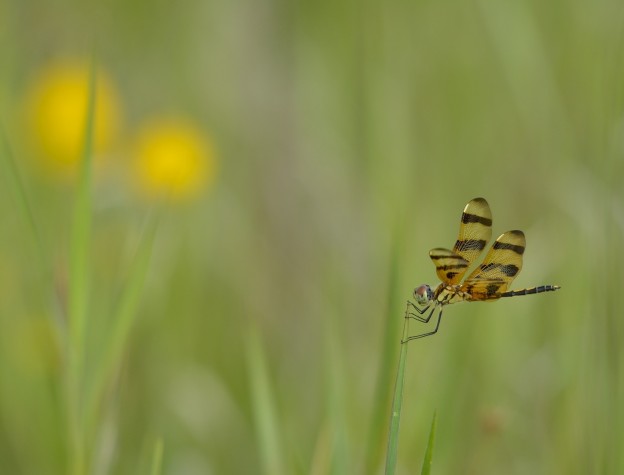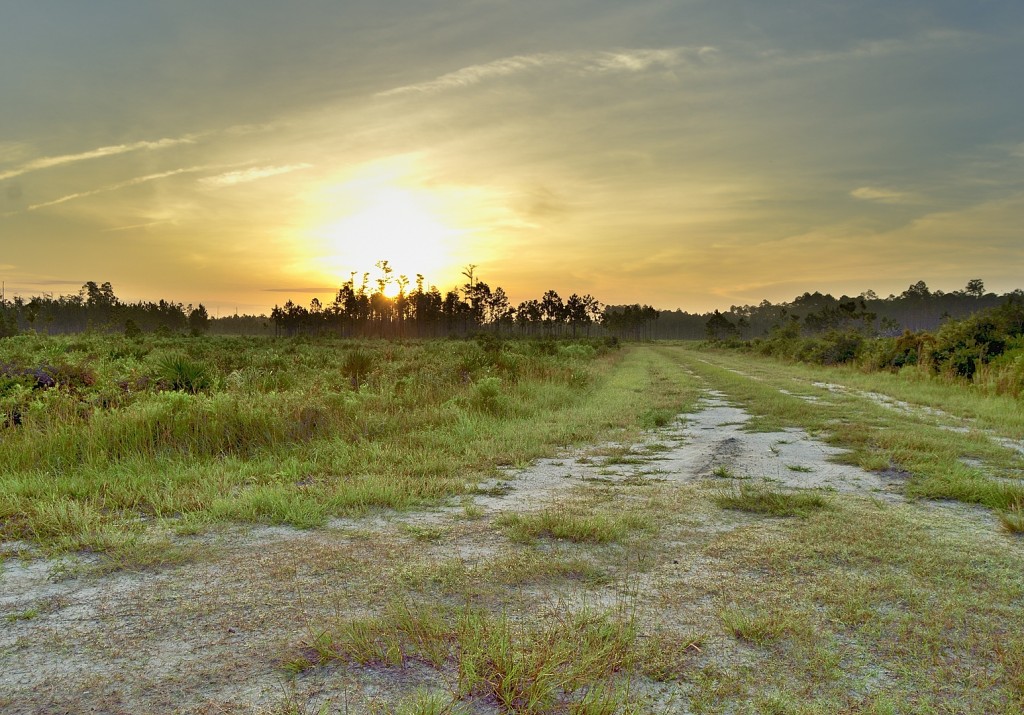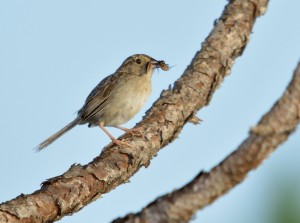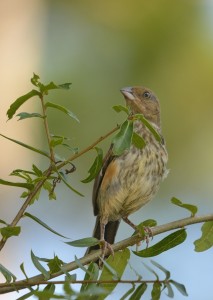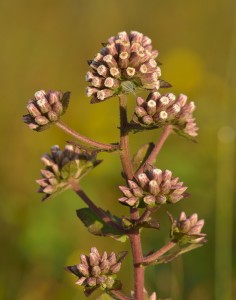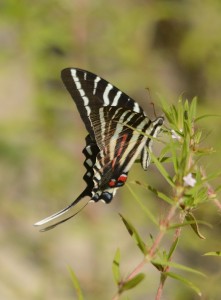August 3, 2013
After the impressive numbers of migrant warblers at Juniper Prairie a few days ago, I optimistically went looking for more this morning at Lake George Conservation Area, just west of Seville. As is often the case when dealing with migrant passerines in Florida, though, it’s hard to predict from one day to the next what will turn up.
I left home a little after 6 to be at a small wet prairie on Combie Road in time for sunrise, at 6:46. I barely made it, flying up Aces Rd in the post-dawn twilight to get there in time. Sunrises can be unpredictable, too. Not enough clouds on the horizon or particulates/vapor in the air to make ithis one really colorful or dramatic. Once the sun rose above the treeline, it was bright yellow and overpowering.
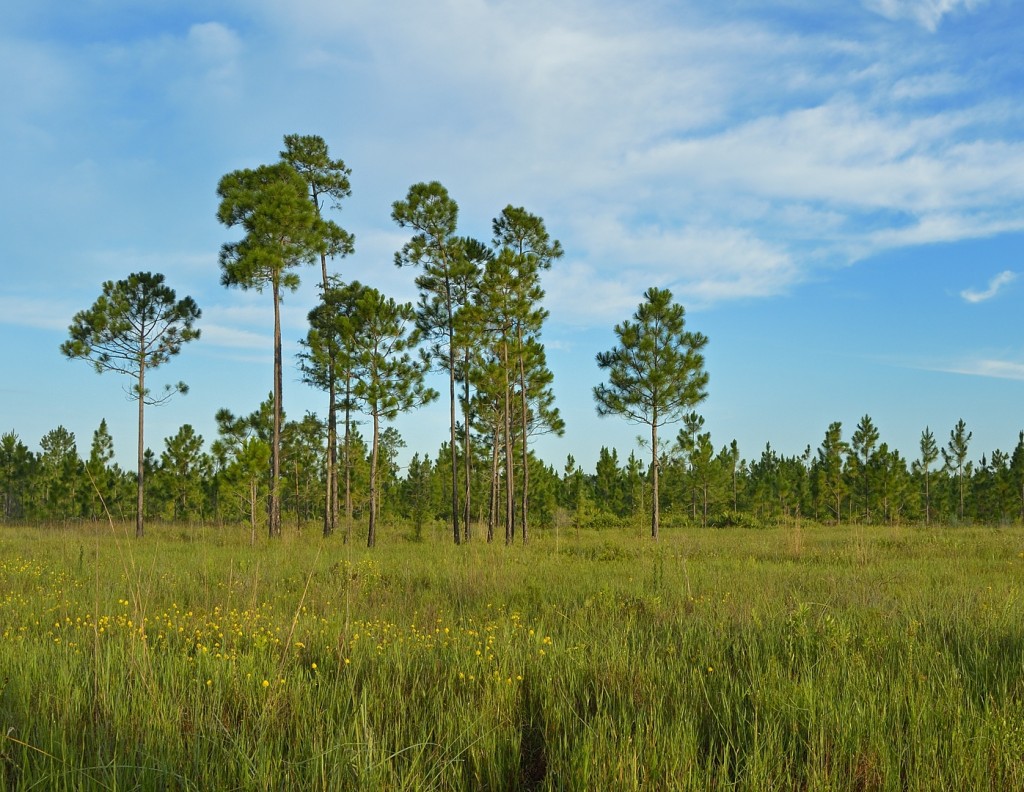
A small wet prairie among the flatwoods. The yellow flowers in the foreground are Polygala rugellii.
Still it was worth getting up to be there. While I was jockeying around trying to find the best vantage point from which to shoot the sunrise, a blue grosbeak was singing from the mixed habitat to the west. A few minutes later, I heard a Bachman’s sparrow singing at the wet prairie on Combie Rd. I spotted and watched the sparrow sitting in a small pine for several minutes, singing a very soft subsong; he was carrying both a wolf spider and a cricket in his bill, and was still carrying them when he flew off.
Birds were immensely less impressive on this day compared to Ocala National Forest a couple of days earlier. Nearly all were resident breeding species. A few prairie warblers were the only migrants I saw. Mostly it was a morning to enjoy the habitat, the flora, and the non-avian fauna. Pluchea foetida, for example, was an attractive composite that I’d never noticed before.
- The most interesting part of Lake George Conservation Area this morning,though, was Silver Pond Road, one of many roads in the area I hadn’t explored before. I followed it for a couple of miles until it started to get dodgy. About a mile in it became the boundary between the conservation area to the west, and pasture and mixed habitat on private property to the east. Mostly I saw the same resident species I had been seeing all morning, but I did find some red-headed woodpeckers. It’s always a welcome pleasure to find new sites for red-headed woodpeckers, which seem to be on the increase in Volusia County.
The other interesting sighting on Silver Pond Rd was one or two zebra swallowtails, very fresh, nectaring persistently on Diodia growing in the road margins. These seem like very small flowers for a relatively large lep like a swallowtail, but he (they?) kept going back to them. I was driving like an idiot, zipping up the road a piece trying to anticipate the next nectaring spot, then scrambling to get the camera on target before they flew on. I was only semi-successful.
I saw one hiker on that road, the only human I saw in the entire morning. And that’s not a bad thing.
